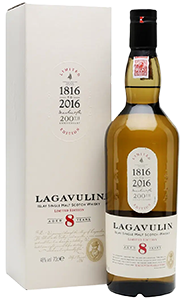Islay—pronounced “eye-la”—is a name that resonates deeply with whisky lovers around the world. Famed for its smoky, briny, and often medicinal single malts, the island’s whiskies are unmistakable. For some, they are the pinnacle of Scotch whisky; for others, they’re an acquired taste. But love them or hate them, there’s no denying the Islay Whisky Region holds a unique and influential place in Scotland’s whisky story.
In this article, we’ll explore Islay’s geography and history, what makes its whiskies so distinctive, the legendary distilleries that call the island home, and a recommendation for a quintessential Islay dram.
Location, Geography & History

Nicknamed the “Whisky Island,” Islay is located just off Scotland’s west coast, west of the Campbeltown region, and is the only official whisky region that consists of a single island. It measures just 40 km long and 32 km wide—only 620 square kilometres in total—yet it boasts an impressive 10 working distilleries, with more in planning.
The coastline is rugged and indented with sea lochs and rocky peninsulas. Thanks to the Gulf Stream, the climate is milder than on the mainland, with fertile land, fresh water lochs, and rivers rich in trout and salmon. This combination of fertile ground, abundant water, and a mild climate has long made Islay ideal for barley cultivation and whisky production.
Islay’s peat is one of its defining features. Once submerged beneath the sea, the island’s peat bogs are rich in decomposed marine vegetation—seaweed and other coastal plants—which impart unique flavours when burned during the whisky-making process.
Whisky production on Islay likely began in the early 14th century, introduced by Irish monks taking advantage of the island’s resources. Distillation remained largely unregulated until 1644, when the British government introduced the Excise Act and began taxing whisky. The people of Islay, described at the time as “wild barbarious people,” resisted the tax collectors, and illicit distillation flourished. By the late 18th century, whisky consumption on the island was described by one reverend as both prolific and problematic—though one suspects the locals were simply enjoying themselves.
The 1823 Excise Act made legal distillation more affordable, prompting a rise in licensed distilleries. Over the centuries, around 30 have operated on Islay, though for much of the 20th century fewer than 10 remained. During this time, as much as 90% of Islay’s whisky went into blends like Johnnie Walker, White Horse, and The Famous Grouse. Single malt releases only became a focus later, particularly from the late 20th century onwards.
The Distinctive Characteristics of Islay Whisky
If there’s one flavour profile most associated with Islay, it’s smoke. This comes from the use of peat smoke to dry malted barley before fermentation and distillation. While peat exists across Scotland, Islay’s is different. Most peat is made up of decomposed mosses and grasses, but Islay’s marine peat delivers smoky flavours laced with brine, salt, and even medicinal iodine.
Typical Islay whisky characteristics include:
- Smoke: Ranging from subtle to intensely medicinal.
- Briny and coastal notes: From both the peat and the sea air during maturation.
- Fruity sweetness: Often from ex-bourbon casks, bringing vanilla and caramel to balance the peat.
- Unpeated exceptions: Distilleries like Bruichladdich and Bunnahabhain show that Islay can also produce lighter, fruitier whiskies.
Islay malts tend to be polarising—either loved passionately or avoided altogether.
Islay’s Distilleries
Despite its small size, Islay is home to some of the most iconic names in Scotch whisky:
- Bowmore (1779): The island’s oldest distillery, known for a balanced profile of smoke, coastal character, and tropical fruit.
- Ardbeg (1815): Intensely smoky with a global cult following.
- Laphroaig (1815): Bold, medicinal peatiness and robust flavour.
- Lagavulin (1816): Rich, peaty, and maritime—famed for both its 16-year-old and the approachable 8-year-old.
- Caol Ila (1846): Once focused on blends, now celebrated for clean, citrusy peat.
- Bunnahabhain (1881): Light, fruity, and low-peat—ideal for those easing into Islay.
- Bruichladdich (1881, reopened 2000): Innovative, with both unpeated and heavily peated expressions like Octomore.
- Kilchoman (2005): A farm distillery making youthful yet complex whiskies from its own barley.
- Ardnahoe (2018): A modern distillery blending tradition with innovation.
- Port Ellen (reopened 2024): A legendary name reborn, though whisky releases are still years away.
Recommended Whisky – Lagavulin 8 Year Old
For a quintessential Islay experience, I recommend the Lagavulin 8 Year Old. It’s affordably priced and is an excellent introduction to the region’s smoky character while offering complexity beyond its age.

- Appearance: Pale gold, with a bright and inviting shimmer.
- Nose: Big and smoky, with hints of sweet spice, lemon zest, and sea air.
- Palate: A powerful wave of peat smoke balanced by creamy vanilla, crisp apple, and warming spices. A drop of water reveals even more depth.
- Finish: Long and smoky, with lingering sweet spice and a touch of salt.
It’s bold, approachable, and pure Islay.
The other thing to take note of is the colour. This has been aged in ex bourbon casks, which for any region doesn’t impart a lot of colour, but Islay whiskies, that aren’t aged in sherry or wine casks, are notably lighter in colour than similar age statements from other regions.
But it certainly doesn’t lack in flavour.
Final Thoughts
Islay may be small in size, but its influence on the whisky world is immense. Its smoky, briny, and often medicinal malts are unique, shaped by geography, history, and the island’s distinctive peat. Whether you’re already a fan or just beginning to explore peated whisky, Islay offers both bold classics and gentler introductions.
From the cult of Ardbeg to the elegance of Bowmore and the innovation of Bruichladdich, there’s something on Islay for every whisky enthusiast willing to take the journey.

